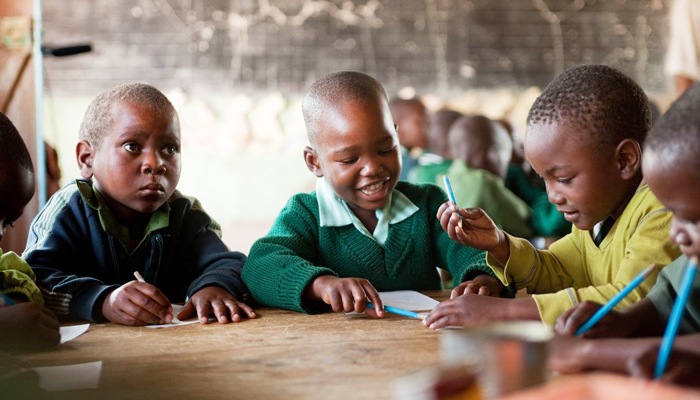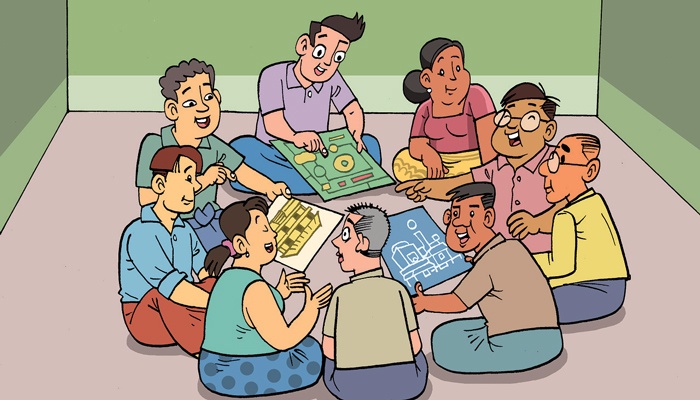Access your Middle School or K-5 Educator’s Guide for your classroom by filling out the form below. You will then be directed to a page where you can download a high quality PDF file to print out or share digitally.
Download the:
Theme: Missionary Disciples of Peace
OBJECTIVE: Students will be able to:
DEFINE “safe spaces” and begin to
CREATE them in their community.
RESEARCH, DESIGN, AND PRACTICE methods for peaceful dialogue.
PROMOTE WAYS their community can inspire peace in schools, churches and the wider community.
As a missionary disciple Lord, make me an instrument of your peace;
where there is hatred, let me bring love;
where there is hurt and suffering, let me offer forgiveness;
where there is doubt, let me share my faith;
where there is sadness, let me offer hope;
where there is depression and fear, let me show possibilities;
where there is sadness, let me bring joy.
As I go forth and encounter places of division, help me to show your peace, hope, love and joy. Amen.
(Adapted from Prayer of St. Francis)
At the height of the crusades St. Francis of Assisi and the Sultan of Egypt crossed the battle lines to meet in peace. This encounter based on a dialogue of peace models for us the heart of a peacemaker.
READ the FAITH and NEIGHBOR PERSPECTIVE articles to see how groups in Chicago and Kenya created safe spaces.
DISCUSS: The youth in Chicago describe their group as a “SAFE SPACE” where they can be heard and accepted. How would you define the expression “safe space”? What are ways that a group can create a “safe space” where everyone can be themselves?
Break into small groups and DESIGN blueprints that could be used to BUILD a safe space where teens in your community could find peace and acceptance. CONSIDER where it could be located and how you want the place to look and feel. Include rules for how people should behave and communicate, etc.. PRESENT the blueprints. DECIDE if the group/class would like to move forward with any of the ideas presented.
Or: INSTRUCT the students to take a 8 ½ x 11 piece of paper and divide it into 4 sections. WRITE one of the following questions in each section:
- What about a space makes you feel safe or unsafe?
- How do people communicate in a safe place?
- What emotions do you have in a safe place?
- What can you do to make others feel safe?
On popsicle sticks have them LABEL the sticks with one word from their answers on each stick. Have each student BUILD a safe place structure from the sticks and then PRESENT to the group.
Chicago
Every Friday night, a group of teens called, “Warriors of Peace” gather at St. Gall parish in Chicago. They live in a neighborhood on the South Side, called Gage Park. It’s a neighborhood where teens see gun violence, gangs, drugs and alcohol abuse. One of the young adults leaders explains that this ministry offers the neighborhood’s young people the chance to have a safe space to express themselves and develop their faith. “We meet every Friday to try to inspire and move hearts with the grace of God,” says Alberto Rodríguez, 25. “Our vision is to inspire our youth in the neighborhood, so they can be leaders like Christ and to love like Christ.”
As a leader, Marie Nan Ramireza says, “In a world where people may see a basement with teens who are just hanging out, I see a basement filled with hope.”
This hope comes from teens like George Alvarez, 16, who said, “I feel like God has been calling me to help not only the community but at my own house.”
Jorge Rivera, a Maryknoll mission educator, points out that the Warriors of Peace have a great zeal for mission and the teens are very engaged in the social issues of their community.
“They are involved and supportive of their family and neighbors,” he says.
Peace starts for the group first in the basement as they create a safe place for themselves to gather, pray, and then they go forth to bring peace to their homes and neighborhoods.
To read more about the Warriors of Peace, see their photos, and hear the voice of one of their leaders follow this link to Maryknoll Magazine.
Kenya
Kenya, a small country in eastern Africa, has suffered years of conflict and war, but the Mutamaiyo Peace School in the town of Molo has become a place of hope. Fr. Lance Nadeau and other Maryknoll priests and brothers working in the country have witnessed people from different ethnic groups fighting ever since a change in government in 1992. Because of this violence there have been many deaths and destruction of homes and businesses.
Fr. Lance explains, “In 2008 local leaders met and tried to develop a strategy for building trust among the local ethnic communities. Part of that strategy was to build an interethnic primary “peace school” where children of the often warring ethnic groups would go to school together.” The community with the help of funding provided by Maryknoll has been able to grow from 20 students in one classroom to 250 students in the entire school now.
In May of 2019 the community again experienced an outbreak of interethnic violence. Fr. Lance reports, “The community protected those in harm and the school from violence.” Within the walls of the school lies the hope for peace and the belief that by children and families coming together and knowing and loving one another, peace may spread.
READ ONE OF THE FOLLOWING:
Old Testament: Isaiah 2: 3-5
Life of Jesus: Matthew 5:38-41
Christian Living: 1 Cor 12:3B-7, 12-13
REFLECT: These Scriptures tell the story of how God invites missionary disciples to be instruments of peace. How do you think this message is relevant in today’s world? What gifts, talents or abilities do you have that you can use in your community to avoid violence and build peace? At Pentecost the Holy Spirit came to help the disciples, Where do you need the Holy Spirit’s help to become a peacemaker?
“Violence is not the cure for our broken world. Countering violence with violence leads at best to forced migrations and enormous suffering, because vast amounts of resources are diverted to military ends and away from the everyday needs of young people, families experiencing hardship, the elderly, the infirm and the great majority of people in our world.
At worst, it can lead to the death, physical and spiritual, of many people, if not of all.” Pope Francis 50th World Day of Peace












